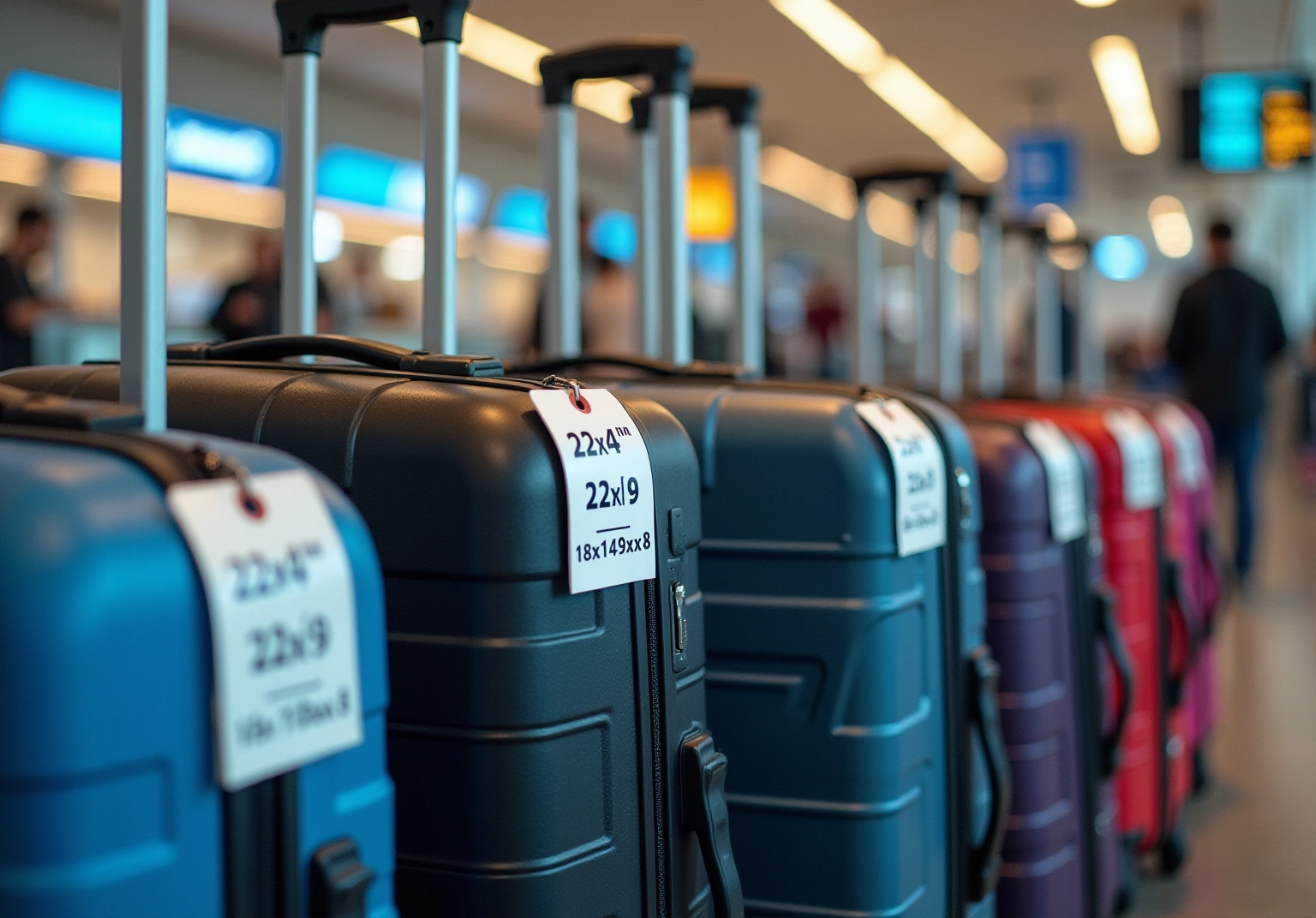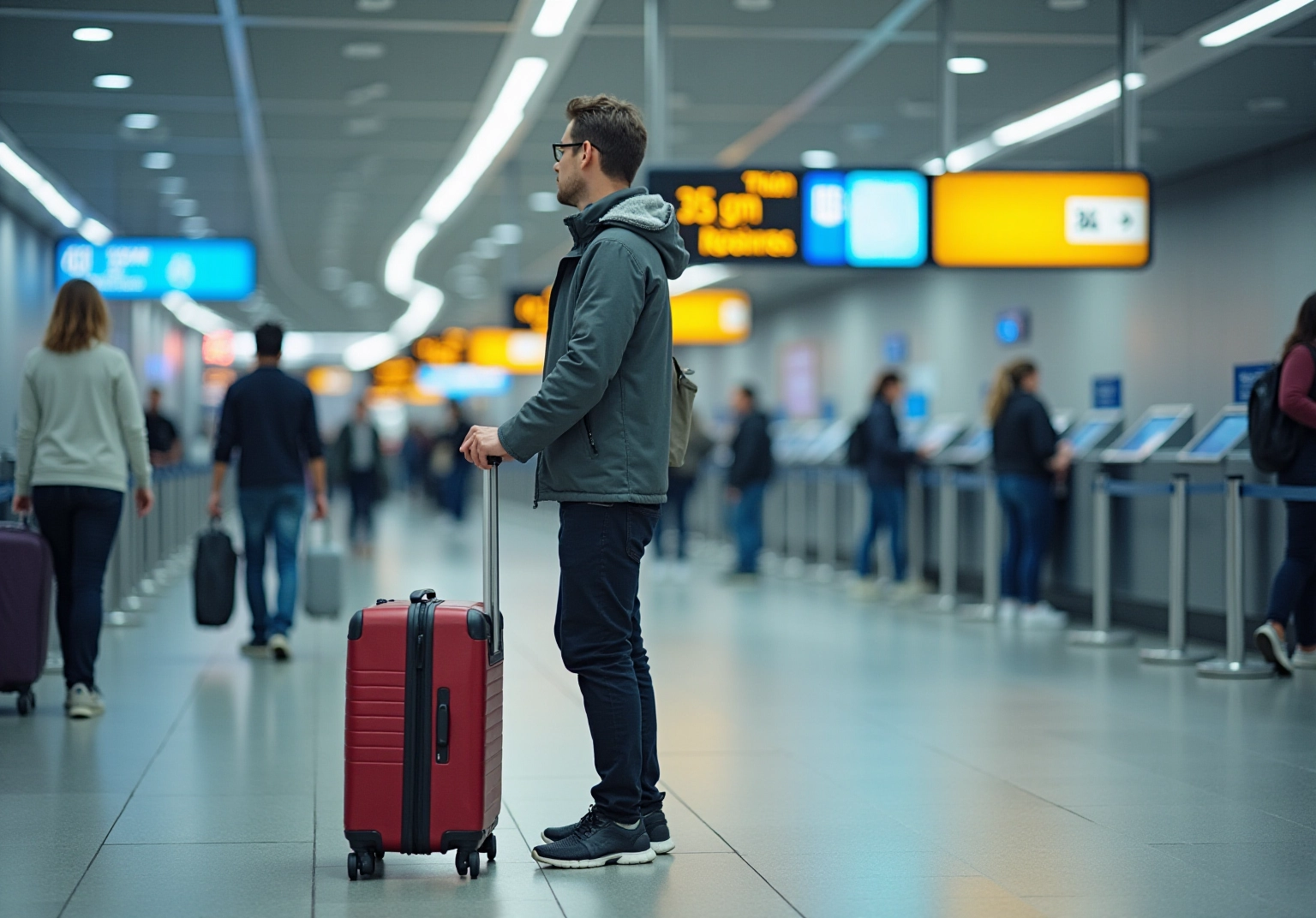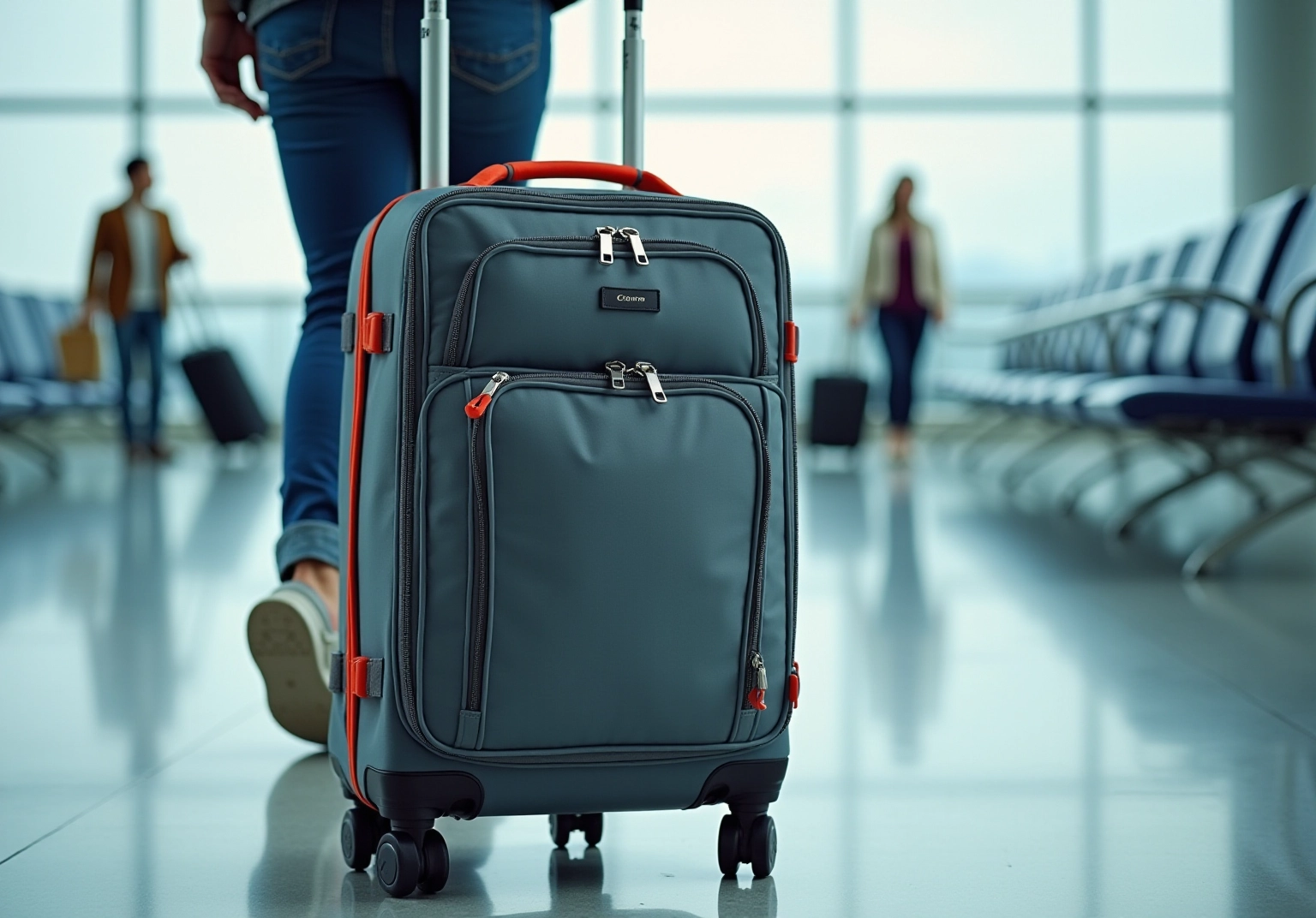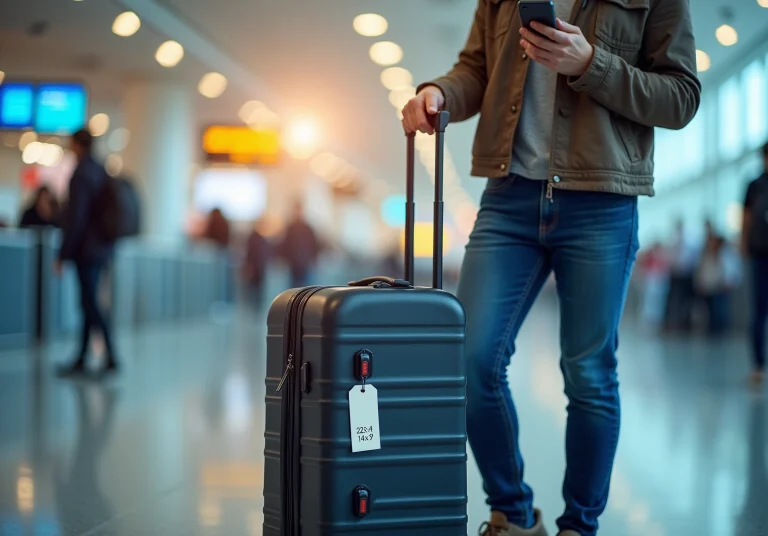Overview
When it comes to carry-on luggage, most U.S. airlines typically allow bags that are 22 inches long, 14 inches wide, and 9 inches high. This size is super important to ensure your bags fit snugly in overhead compartments or under the seat in front of you! Trust me, sticking to these guidelines can save you from those pesky extra fees and make your travel experience so much smoother.
But hey, keep in mind that not all airlines are the same! There are some variations out there, and these rules can change, especially with all the security concerns we face today. So, it’s always a good idea to check the specific requirements of the airline you’re flying with. Happy travels!
Key Highlights:
- Approved carry-on luggage size for most U.S. airlines is typically 22 inches long, 14 inches wide, and 9 inches high, including handles and wheels.
- Personal items can usually be up to 18 inches by 14 inches by 8 inches; however, dimensions may vary by airline.
- Different airlines have varying rules, with some low-cost carriers allowing larger bags.
- Adhering to carry-on size regulations helps avoid extra fees and facilitates easier access to essentials during flights.
- The TSA’s 3-1-1 rule limits liquids in carry-on luggage to containers of 3.4 ounces or less, packed in a quart-sized bag.
- Carry-on luggage regulations have evolved due to security concerns post-9/11, leading to stricter size limits.
- Future changes may tighten carry-on size limits further, especially with potential updates from airlines like American Airlines in 2025.
- Key characteristics of approved carry-on luggage include lightweight materials, multiple compartments, and smooth-rolling wheels for convenience.
Introduction
Understanding the approved carry-on luggage size is essential for you, the traveler, as you navigate the complexities of air travel efficiently!
With varying regulations across airlines and the potential for unexpected fees, knowing these guidelines can truly enhance your travel experience.
But as airline policies continue to evolve, how can you ensure you’re packing correctly and avoiding the pitfalls of oversized bags?
Let’s dive into the importance of carry-on size together, exploring regulations, benefits, and tips for a hassle-free journey ahead!
Define Approved Carry-On Luggage Size
When it comes to packing for your next adventure, understanding authorized baggage dimensions is key! These guidelines outline the approved carry on luggage size for bags permitted in the aircraft cabin. For most U.S. carriers, the approved carry on luggage size is generally 22 inches long, 14 inches wide, and 9 inches high, including handles and wheels. This ensures your bags fit snugly in overhead compartments or under the seat in front of you.
Most airlines allow you to bring one personal item in addition to your carry-on, usually not exceeding 18 inches by 14 inches by 8 inches. But here’s a little tip: different carriers can have different rules, especially on international flights! For example, while Delta Airlines sticks to the standard measurements, Aer Lingus has a maximum length of 18.5 inches, and British Airways allows a carry-on size of 22 by 18 by 10. And if you’re flying with low-cost carriers like Frontier Airlines, you might even be able to bring a larger bag—up to 24 inches by 16 inches by 10 inches!
It’s super important to know the approved carry on luggage size regulations to avoid any unexpected charges or hassles at the airport, such as having to check your bag if it exceeds these dimensions. And don’t forget about the TSA’s 3-1-1 rule! This handy guideline limits liquids in your hand luggage to containers of 3.4 ounces or less, all packed inside a single quart-sized bag.
As we look ahead to 2025, the typical dimensions for personal luggage across major U.S. carriers are expected to stay pretty consistent. However, always double-check your carrier’s specific rules before you start packing. That way, you can ensure a smooth and enjoyable journey!

Understand the Importance of Carry-On Size in Airline Travel
Following baggage dimension restrictions in air travel is super important! By sticking to the approved carry on luggage size, you can avoid those pesky extra fees and the hassle of checking bags. Carry-on luggage gives you immediate access to your essentials during the flight—think medications, electronics, and personal items. Travel expert Kate Duthie puts it perfectly: “You can get around more easily with just one bag, avoid fees for extra luggage, and you don’t have to wait in queues to check in or at baggage carousels at your destination.”
With many airlines now charging for checked luggage, understanding and adhering to the approved carry on luggage size can save you a chunk of change. When you pack efficiently within these limits, you not only enjoy a smoother boarding process but also dodge the stress of potential gate-checking due to oversized bags. As of 2025, the approved carry on luggage size is generally around 55cm x 35cm x 20cm, with a weight limit of about 7kg.
It’s also crucial to note that airlines like Spirit Airlines allow just one personal item measuring up to 18×14×8 inches. So, getting familiar with these specifics can really enhance your travel experience! And don’t forget to keep liquids under 100ml in a clear plastic bag to comply with security regulations. This little tip contributes to a hassle-free journey, making your travel adventure even more enjoyable!

Trace the Evolution of Carry-On Luggage Regulations
The evolution of hand luggage regulations has been shaped significantly by security concerns and the ever-changing landscape of airline business models. Remember November 2001? That’s when the Transportation Security Administration (TSA) was established following the September 11 attacks. Their mission? To enhance airport safety, which led to the introduction of strict rules regarding the size and contents of personal bags. By April 2003, all airlines had to strengthen cockpit doors, reflecting a broader push for increased security that also influenced baggage regulations. These measures were all about ensuring your safety as a passenger, and they’ve become standard practice in the industry.
As airlines adapted to these new security protocols, they began tweaking their baggage policies to boost revenue. This shift meant introducing fees for checked baggage, which encouraged travelers like you to rely more on hand luggage. Consequently, stricter size limits emerged, with the widely accepted dimensions of 22 x 14 x 9 inches becoming the norm for carry-on bags.
Over the years, the application of these regulations has varied by airport. For instance, Miami International is known for its particularly strict enforcement of dimension limits. Travelers often face challenges at the gate concerning luggage size, underscoring the importance of understanding each airline’s specific policies. While many airlines claim their hand luggage dimensions have remained unchanged, ongoing adjustments in response to evolving security protocols and global regulations continue to influence what’s acceptable for hand baggage.
Looking ahead, there are whispers that American Airlines may tighten its baggage policy in 2025, potentially aligning with stricter international standards that kick in on September 1, 2024. This could mean smaller allowable sizes for carry-ons and personal items, making packing a bit more challenging for all of us. As the air travel landscape keeps evolving, staying updated on hand luggage regulations is essential for a smooth journey. So, keep your eyes peeled and plan accordingly!

Identify Key Characteristics of Approved Carry-On Luggage
When it comes to authorized baggage, there’s so much more than just dimensions to consider! Think about the design and functionality that truly cater to your needs as a modern traveler. Lightweight materials are a game-changer—they keep your bag easy to handle while ensuring it can withstand the rigors of travel.
Imagine having multiple compartments that enhance organization, paired with easy-access pockets for quick retrieval of your essentials. And let’s not forget about smooth-rolling wheels! Did you know that over 60% of travelers prioritize ‘wheelability,’ according to a Consumer Reports survey? That’s a big deal for a seamless airport experience!
Now, if you’re like me, you appreciate bags that offer flexibility. Options like expansion or compression capabilities, such as the Briggs & Riley Baseline Global Carry-On Spinner, are perfect for varying travel needs, whether you’re heading out for a short trip or a longer journey.
The approved carry on luggage size recommends dimensions of around 22″ x 9″ x 14″ or smaller. Understanding these key characteristics empowers you to select carry-on luggage that not only meets the approved carry on luggage size but also aligns perfectly with your personal travel style. So, what are you waiting for? Let’s get packing!

Conclusion
Understanding the approved carry-on luggage size is essential for you as a traveler aiming to navigate the complexities of air travel smoothly! By familiarizing yourself with these regulations, you can avoid unexpected fees, ensure your belongings are easily accessible during the flight, and enjoy a hassle-free boarding experience.
Throughout this article, we’ve highlighted key insights, including:
- The typical dimensions for carry-on luggage.
- The importance of adhering to these guidelines.
- How carry-on regulations have evolved, influenced by security measures and airline policies.
- The significance of lightweight designs, organizational features, and the convenience of well-structured bags—showcasing how these elements can truly enhance your travel experience.
As air travel continues to evolve, staying informed about the latest carry-on regulations is crucial. This knowledge not only empowers you to pack efficiently but also fosters a more enjoyable journey. Embracing these guidelines can transform your travel experience, allowing you to focus on your adventures rather than the logistics of your luggage. So, pack smart and get ready for your next adventure!
Frequently Asked Questions
What is the approved carry-on luggage size for most U.S. airlines?
The approved carry-on luggage size for most U.S. carriers is generally 22 inches long, 14 inches wide, and 9 inches high, including handles and wheels.
Can I bring a personal item in addition to my carry-on luggage?
Yes, most airlines allow you to bring one personal item in addition to your carry-on, which usually should not exceed 18 inches by 14 inches by 8 inches.
Do all airlines have the same carry-on luggage size restrictions?
No, different airlines can have different rules. For example, Delta Airlines follows the standard measurements, while Aer Lingus has a maximum length of 18.5 inches, and British Airways allows a carry-on size of 22 by 18 by 10 inches.
What are the carry-on size restrictions for low-cost carriers like Frontier Airlines?
Low-cost carriers such as Frontier Airlines may allow larger bags, with a maximum size of up to 24 inches by 16 inches by 10 inches.
Why is it important to know the approved carry-on luggage size regulations?
Knowing the approved carry-on luggage size regulations is crucial to avoid unexpected charges or hassles at the airport, such as having to check your bag if it exceeds the allowed dimensions.
What is the TSA’s 3-1-1 rule regarding liquids in carry-on luggage?
The TSA’s 3-1-1 rule limits liquids in your hand luggage to containers of 3.4 ounces or less, all packed inside a single quart-sized bag.
Will the carry-on luggage size regulations change in the future?
As of now, the typical dimensions for personal luggage across major U.S. carriers are expected to stay consistent through 2025, but it’s always best to double-check your carrier’s specific rules before packing.


































